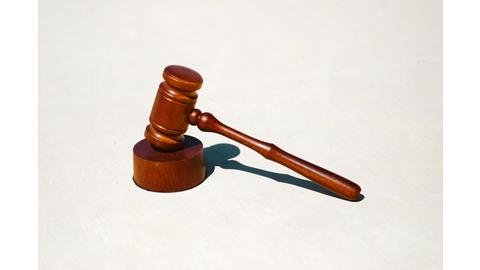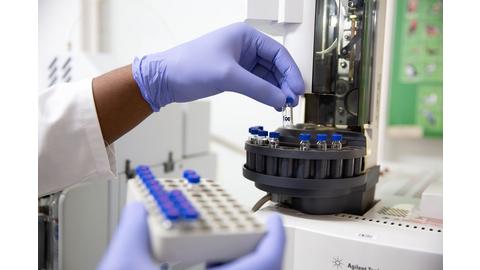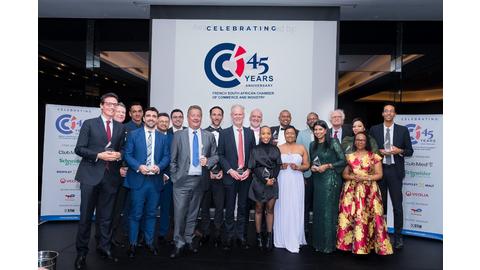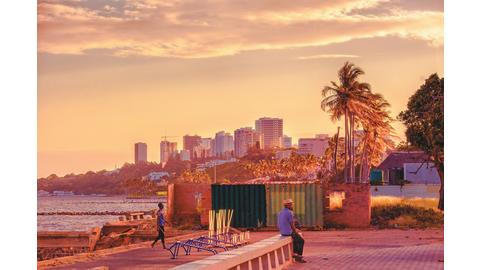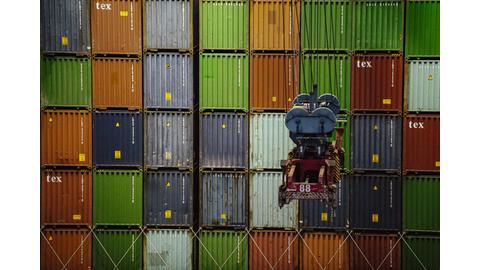Analyses & Studies
What the VAT is going on ?

WHAT THE VAT IS GOING ON?
Published on March 28, 2018
PRACTICAL POINTS TO HELP YOU NAVIGATE THE INCREASE IN THE VAT RATE
By Patrick Emmett – Senior Tax Consultant, MAZARS Port Elizabeth
Now that the initial anxiety following the announcement of the increase in the VAT rate to 15% in the 2018 Budget Speech has died down, the underlying concern with regards to its practical application and implementation has risen to the fore. The rate change, which will come into effect from 1 April 2018, has left taxpayers with very limited time to adequately adjust. Taxpayers need to understand how the change impacts them, and implement the required system and control changes to adequately account for the change. Outlined below is a high-level discussion of the transitional rules as well as recommendations for the practical application of the rate change.
Date of transaction
The date of the transaction plays a critical role in determining which VAT rate to apply and in which period it should be accounted for. Section 9 of the VAT Act contains the time of supply rules, determining when the transaction is deemed to occur for VAT purposes.
The general rule for the time of supply of any goods or services, is the earlier of when an invoice is issued by the supplier or any payment of consideration is received by the supplier in respect of the supply. The word “invoice” is defined in section 1 of the VAT Act as “a document notifying an obligation to make payment”. It is also important to take into account that the payment of a deposit is not viewed as a payment of consideration.
The specific time of supply rules as contained in section 9 of the VAT Act include, among others, the following:
- transactions between connected persons – when goods are removed or made available, or when services are performed;
- rental agreements or the supply of services under an agreement which provides for periodic payments – deemed to be successively supplied, and each successive supply shall be deemed to take place when a payment becomes due or is received, whichever is earlier;
- construction related supply of goods or services - deemed to be successively supplied, and each successive supply shall be deemed to take place when a payment becomes due, is received, or any invoice relating only to that payment is issued, whichever is the earliest;
- instalment credit agreement – when the goods are delivered or the time any payment of consideration is received by the supplier, whichever is earlier; and
- fixed property – when transfer is registered in the deeds registry or any payment is made for such supply, whichever date is earlier.
Accordingly, where the time of supply occurs prior to 1 April 2018, VAT should be accounted for at 14%. Conversely, where the time of supply occurs post 1 April 2018, VAT should be accounted for at 15%. The issue that arises though, is how to account for VAT where goods are delivered, or services are rendered before 1 April 2018 (or both before and after 1 April 2018) but the time of supply is deemed to occur after 1 April 2018. Fortunately, the VAT Act contains transitional rules which deal with the above issue.
Transitional rules
Section 67A of the VAT Act contains rules that outline which rate of VAT to use in certain situations where the time of supply will be deemed, in terms of section 9 of the VAT Act, to occur after 1 April 2018.
Goods provided or services performed prior to 1 April 2018
Where goods are provided or services are performed prior to 1 April 2018 VAT at the rate of 14% will apply, despite the fact that an invoice for the supply may be issued and payment received after 1 April 2018. This provision does not apply to the supply of fixed property, which is dealt with separately below.
Goods provided or services performed before, and ending on or after 1 April 2018
Where goods are provided or services are performed over a period which commences before, and ends on or after 1 April 2018, the value of the supply needs to be apportioned between the supplies which occurred before 1 April 2018 and those which occurred on or after 1 April 2018. This apportionment should be made on a fair and reasonable basis and allocated accordingly, with the onus resting on the taxpayer to prove this. For the supplies relating to the period before 1 April 2018, VAT of 14% will apply, and for those supplies on or after 1 April 2018, VAT of 15% will apply.
Goods provided or services actually performed on or after 1 April 2018 in respect of contracts concluded between 21 February 2018 and 31 March 2018
Section 67A of the VAT Act contains anti-avoidance rules which are designed to prevent VAT vendors from triggering the time of supply rules before 1 April 2018 in order to take advantage of the 14% VAT rate, but where the actual supplies occur after 1 April 2018.
The anti-avoidance rule will apply to any transaction where the time of supply is triggered between 21 February 2018 and 31 March 2018 and the goods are only provided 21 days after 1 April 2018 (i.e. from 23 April 2018 onwards) or the services are performed after 1 April 2018. In these instances, the supply is deemed to occur on 1 April 2018 and VAT of 15% will apply.
The anti-avoidance provisions will however not apply where it is the usual business practice for payment to be made or invoices to be issued before supplies are made.
Supply of residential fixed property
VAT of 14% may apply to the sale of residential fixed property even where the supply is deemed to be made on or after 1 April 2018 due to the transfer being registered or payment being made on or after that date. This rule will only apply to supplies on or after 1 April 2018 where the contract for the supply of the residential fixed property is concluded before 1 April 2018, and the VAT inclusive price was included as such in the agreement.
For the purposes of section 67A residential property includes a dwelling and any land on which it is erected, any real right to a dwelling, any sectional title unit which comprises a dwelling, a share in a share block company which confers the right to or interest in the use of a dwelling, land which is acquired for the sole purpose of the erection of a dwelling as confirmed by the purchaser in writing, or the construction by a vendor carrying on a construction enterprise of any new dwelling.
Lay-by agreements
VAT on lay-by agreements concluded before 1 April 2018, where the deposit required to set the goods aside is paid before that date, will be accounted for at a rate of 14%. If the lay-by agreement is subsequently cancelled, VAT is calculated by applying the tax fraction of 14/114 on any amount retained by the supplier.
Where the lay-by agreement is concluded after 1 April 2018, VAT of 15% is accounted for.
Where these agreements are subsequently cancelled the new tax fraction of 15/115 must be used to calculate the VAT to be accounted for on any amount retained by the supplier.
Practical considerations and recommendations
Accounting systems and capturing of transactions
Accountants and bookkeepers need to be aware of the VAT time of supply rules and transitional rules when invoices are issued to customers, or invoices from suppliers are processed. Accounting systems need to be updated to take the rate change into account. SARS has categorically stated that if the accounting system is not updated, manual reconciliations would need to be performed to ensure the correct VAT amount is accounted for and paid over to SARS, failing which penalties and/or interest will be levied.
Sales and billing systems, issuing of cash register slips, tax invoices, debit and credit notes
VAT vendors must ensure that their sales and billing systems are updated to include VAT at 15% from 1 April 2018. SARS has recommended that the system is checked for errors prior to 1 April 2018, in order to ensure that transactions are processed and reflect the correct VAT rate. Importantly, prices are deemed to include VAT, and thus if incorrectly declared could result in penalties and/or interest.
Update to VAT 201 form
SARS has indicated that the VAT 201 will be updated for a 15% field in the output tax section of the return. Input tax will be declared as normal, however we recommend that reconciliations are maintained to justify the declaration of the input tax amount (which is the total of the 14% and 15% claims).
Consideration of Input claims
If supplier levies VAT at a rate of 14% when the rate should have been 15%, the VAT vendor who wishes to claim such VAT as an input tax deduction can only claim input tax of 14%. Only once a revised invoice is received from the supplier will the VAT vendor be entitled to claim the additional VAT (the difference between the 15% which should have been charged and the amount previously claimed) as an input tax deduction, and only in the period in which such invoice was received.
With regards to invoices where the input tax was not previously claimed, a VAT vendor will still be entitled to claim the input tax (provided such claim is within a period of 5 years from the period in which the input tax should have been claimed). The input tax claimed will be the amount of VAT included on the invoice (i.e. if invoiced at 14%, the input tax claim will be 14%, even if claimed after 1 April 2018).
Issuing of debit or credit notes on or after 1 April 2018
When issuing a debit note or credit note on or after 1 April 2018 it is important to consider the original supply for which the debit note or credit note applies.
Where a debit note or credit note relates to supplies which were made before 1 April 2018 the debit note or credit note must be issued using the tax fraction of 14/114 against the VAT inclusive value of the original supply.
Where a debit note or credit note relates to supplies which were made on or after 1 April 2018 the debit note or credit note must be issued using the tax fraction of 15/115 against the VAT inclusive value of the original supply.
Bad debt written off
When writing off a debt which has become bad, the VAT rate used when claiming the adjustment to input VAT is the rate which applied at the time the original supply was made.
Where the bad debt write-off relates to debt before 1 April 2018, the adjustment is calculated using the tax fraction of 14/114 against the VAT inclusive value of the amount written off.
Where the bad debt write-off relates to debt on or after 1 April 2018, the adjustment is calculated using the tax fraction of 15/115 against the VAT inclusive value of the amount written off
Accounting basis for VAT
VAT is either accounted for on the invoice basis or the payment basis. The time of supply rules are the same for all VAT Vendors, no matter whether the invoice basis or payment basis is used to account for VAT. Importantly, with regards to the payment basis, if the time of supply rule is triggered by an invoice being issued in a prior period (for instance when the VAT rate of 14% applied), but the payment is only received in a subsequent period (when the VAT rate of 15% applied), the VAT will be accounted for and paid over to SARS at the original rate of 14%.
The time of supply rules for the payment basis of accounting for VAT are the same as those for the invoice basis, but VAT is only paid over to SARS when payment is received from a customer.
Importation of Goods
Where goods are entered for home consumption on or after 1 April 2018 the customs declarations must reflect a VAT rate of 15%. Invoices from the clearing agents for services in these clearing goods must reflect the correct rate, as the usual time of supply rules apply, however read with the transitional rules mentioned above.
Increase in contract price agreed between parties
The VAT Act permits the vendor to increase the contract price and recover the additional VAT from the customer under an existing contract concluded before 1 April 2018. This however cannot be done if the parties have specifically agreed in writing in the applicable contract that the contact price may not be increased as a result of a VAT increase. The vendor may also elect not to recover such increase from the customer.
The supplier is required to account for VAT at 15% on the supplies relating to the contract from 1 April 2018, whether the increase in VAT is recovered from the customer or not. This can be illustrated as follows:
A contract is concluded during 2017 which provides for a monthly charge of R228 (inclusive of VAT of 14%).
Prior to 1 April 2018, the monthly VAT accounted for would amount to R28 and revenue accounted for would amount to R200.
Where the price increase is agreed between the parties because of the VAT increase, the contract price (inclusive of VAT of 15%) will be increased to R230 (= 228 x 100 / 114 x 1.15). The VAT accounted for will then be R30 and revenue accounted for will remain at R200.
Where the price is not increased by the supplier (either through their own choice or because the contract specifically prohibits this), the VAT to be accounted for will amount to R29.74 (= 228 x 15/115) and revenue accounted for will amount to R198.26.
Changes to individual price tickets in stores
The Commissioner for SARS has granted permission in terms of section 65(iii) of the VAT Act that prices of products in a store may include the new VAT rate from 1 April 2018 without having to change all individual price tickets.
However, SARS have indicated that notices must be displayed to inform customers that the price on the item does not include VAT at the new rate of 15% and that prices will be adjusted at the point of sale upon making payment where the customers offer to purchase is accepted. It has also been advised that the notices include an example showing the old and new prices of one product and how the adjustment will be made at the point of sale. Permission has been granted to the end of May 2018 and all notices should be removed by no later than that date.
Notional input VAT
A notional input VAT claim by a vendor on the purchase of second hand goods from non-VAT vendors is determined in terms of normal time of supply rules. Where the time of supply is before 1 April 2018 the “old” tax fraction of 14/114 is used. Where the time of supply is on or after 1 April 2018 then the “new” tax fraction of 15/115 is used.
Vouchers
When there is a sale of a face value voucher (i.e. shopping centre voucher), the sale is disregarded for VAT purposes. Only when the voucher is redeemed is the VAT rate considered. If this date is on or after 1 April 2018 then the VAT rate of 15% is used.
When there is a sale of a voucher for specified goods or services (i.e. a voucher for a massage treatment), the sale is not disregarded for VAT purposes. The VAT rate is considered when the voucher is sold. If this date is before 1 April 2018 VAT of 14% will apply, and if on or after 1 April 2018 then VAT of 15% will apply. The date of redemption of the voucher does not matter.
Contact Mazars:
>>> In Joburg: Cindy Cappia
>>> In Cape Town: Hanaa Trifiss



